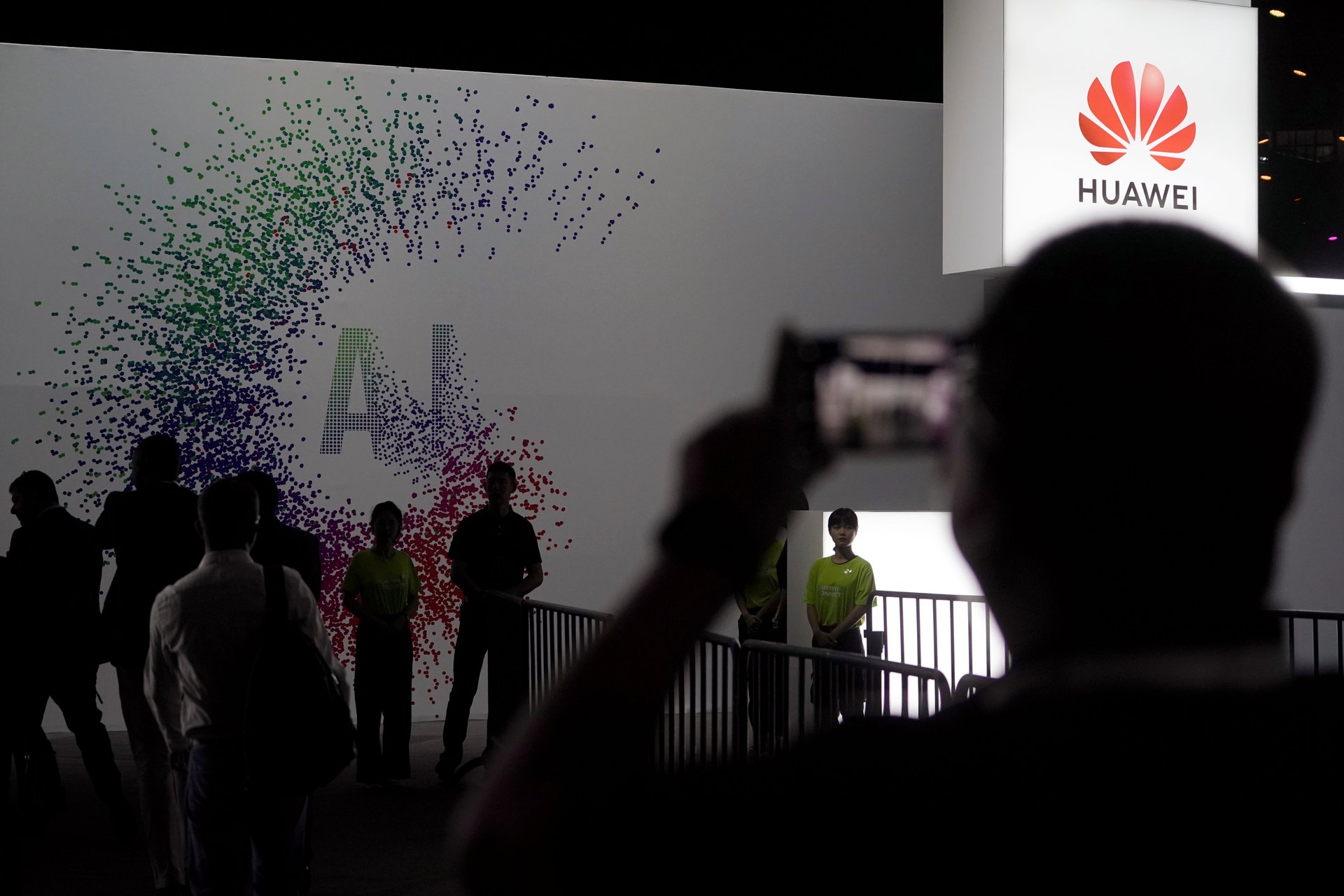Huawei’s big test will be trying to sell a device with no Google apps outside China
As Chinese tech giant Huawei prepares to unveil its Mate 30 phone on Thursday (Sept. 19), analysts are predicting it’s going to be hard to get overseas consumers to buy what the tech giant has so successfully sold at home: an Android device without Google apps.


As Chinese tech giant Huawei prepares to unveil its Mate 30 phone on Thursday (Sept. 19), analysts are predicting it’s going to be hard to get overseas consumers to buy what the tech giant has so successfully sold at home: an Android device without Google apps.
In an email, Huawei confirmed that the three main models in the series, which include the flagship Mate 30 Pro, will have an Android operating system, which is an open-source piece of software anyone can use, but they will not have any Google apps, which Huawei would have to license from the US tech giant. This is due to a US blacklist that barred American firms from supplying to Huawei.
The Chinese firm was placed on the US Department of Commerce’s “entity list” because of national security concerns in May, which means US firms are now required to get prior approval for any sales. More than 130 applications have been reportedly submitted to the commerce department seeking such approval. A partial reprieve in place until Nov. 19 applies only to continuing support for existing phones, not for new products like the Mate 30.
“The Mate 30 Pro will run Android OS but will not currently have Google services pre-installed as Google does not yet have a license from the US Commerce Department,” Joe Kelly, a Huawei spokesperson, said. “As far as we know, no vendors have yet had a license application approved (by the department).”
Huawei has long sold Android phones without Google apps in China, with few of Google’s mobile apps available in the country. The US search giant withdrew its search services over human rights concerns in 2010. A wealth of alternative Chinese app stores and apps exist, and Huawei delivered 37 million phones and captured 40% of the Chinese market in the second quarter of this year. But analysts doubt consumers outside China will be drawn to a top-end phone—the previous model in this series, the Mate 20, cost more than $1,100 at launch—with no access to widely-used Google apps such as Google Maps, Gmail, YouTube, and the Google Play Store, which is where most users primarily download other Android apps. The company itself forecast that the ban could lead to a drop in its revenue for this year of $10 billion.
“The lack of direct support for Google apps is going to make it a difficult sell almost anywhere outside China especially for the price it commands,” Kiranjeet Kaur, an analyst with research firm IDC, said. “The attractive hardware features may not be enough to convince users to go for a Mate 30.”
By all accounts, the hardware itself is likely to be pretty impressive, with at least two Mate 30 models supporting 5G, according to The Verge. The top Pro model is expected to have a rear camera featuring four sensors, including a pair of 40-megapixel ones, while the display will feature a screen that curves onto the sides of the phone.
Jia Mo, a Paris-based analyst with research firm Canalys, said Huawei could try pre-installing alternatives on its open-source Android OS such as Spain’s Aptoide app store, which is reportedly in talks with Huawei about offering its services to replace Google Play Store. But it’s a big ask of buyers. “Even if the company could find alternative app providers, users will be forced to change their habits. This is not a situation many consumers would want to experience,” Mo told Quartz.
Despite the highly anticipated launch in Munich, actual sales dates haven’t been set yet, and it’s unclear the company will really go forward with selling it at launch in Europe, a booming market for the company’s phones in recent years.
In the wake of the US ban, Huawei sped up its development of its own operating system for smartphones, Harmony OS, which it unveiled in August. But Huawei’s own executives have repeatedly emphasized that they would like to stick to Android, as Harmony OS is primarily intended for internet-of-things gadgets, rather than phones. In any case, the problem isn’t really the operating system, which most consumers aren’t even thinking about if a phone’s working well, but the issue of being banished from the Google universe.
Huawei often keeps surprises up its sleeve, however, and that’s likely to be true this time as well. Perhaps a last-minute approval will come through—especially with both the US and China making concessions to one another ahead of upcoming trade talks next month. Some Android trackers have speculated the company may come up with a workaround that allows users to download Google apps on their own. And if by some chance, consumers remain more open to a Huawei phone than expected, or the ban spurs the development of competitive rivals to Google apps that Huawei can legally offer, Huawei, in the long term, may come out stronger than ever.